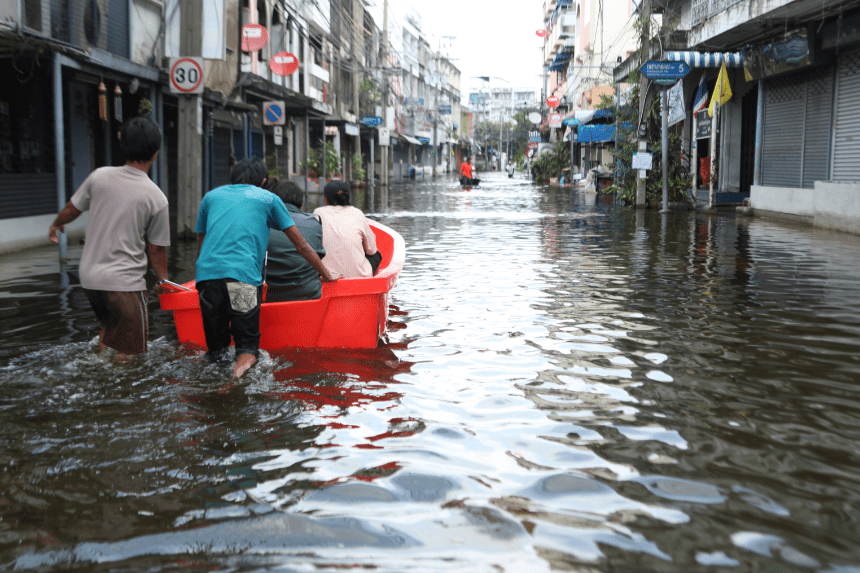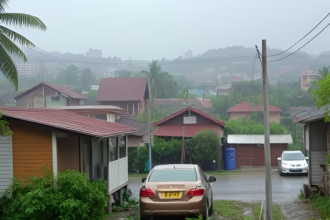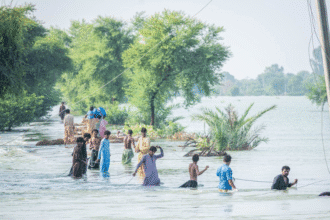City life in India often becomes very difficult every monsoon, since heavy rains cause chaos and flood towns. Knowing about the monsoon does not stop cities from struggling because their infrastructure is old, and there has been too much unplanned growth. Tough and smooth landscaping stops rainwater from soaking in and overflowing drains, plus bad waste management adds to the trouble. With increased climate change, heavy rains happen more often and make cities’ systems struggle to cope. All these factors result in a reduced ability to travel, homes being harmed, and a delay in daily activities. Understanding the reasons behind India’s collapses plays a big role in improving its future.
- Why Do Monsoon Rains Cause Chaos in Indian Cities Year After Year?
- How Does Rapid Urbanization Make Indian Cities Vulnerable to Monsoons?
- Are Drainage Systems in Indian Cities Equipped for Heavy Rainfall?
- What Role Does Poor Waste Management Play in Urban Flooding?
- How Does Climate Change Intensify the Impact of Monsoon Rains?
- Why Do Emergency Response Systems Fail During Urban Flooding?
- What Are the Economic Costs of Monsoon-Related Urban Disasters?
- Why Are the Urban Poor Most Affected by Monsoon Flooding?
- What Can Be Done to Make Indian Cities Monsoon-Resilient?
- Is There Hope for the Future?
- Conclusion
Why Do Monsoon Rains Cause Chaos in Indian Cities Year After Year?
June to September in India marks the monsoon, which is seen both as a help and a problem. The rains are essential for farmers, but they often freeze most parts of major cities. On an annual basis, we notice pictures of mephias are submerged streets, immobile trains, drains that are no longer draining, and people stranded along their routes. People wonder why major cities in India aren’t better prepared for the effects of the monsoon, considering how often it happens. Outdated infrastructure, quick, unorganized urban growth, drainage systems that are easy to block, and not enough measures to resist climate change are to blame. Because of climate change, extreme weather hits more often and harder, and the country’s cities are not ready for these yearly rains.
How Does Rapid Urbanization Make Indian Cities Vulnerable to Monsoons?
Cities in India are getting bigger much faster than infrastructure can handle. Too modernize cities, wetlands and green spaces that handled rainwater have been paved over for buildings and roads. Natural water absorption becomes nearly impossible, making cities waterproof pools. Areas that are meant to hold excess rainfall, such as wetlands, are now used for building because of urban sprawl. When land for roads and buildings is used up the available space, even light rain can cause a lot of flooding. Despite the need, local governments often do not enforce important environmental standards or zoning laws, which allows the monsoon floods to become even more damaging.
Are Drainage Systems in Indian Cities Equipped for Heavy Rainfall?
An important problem leading to monsoon chaos in Indian cities is the outdated and substandard drainage system. Because most big cities still use ancient drainage systems, the increased rainfall and waste they deal with can overwhelm these systems. Such restricted and old channels can fill with garbage, construction materials, or plastic, which makes them less effective. In several places, drains face obstructions, and some are completely blocked. With strong monsoons caused by climate change, the weak drainage systems quickly fail, and the water from monsoons turns streets into rivers and makes some areas into islands. Even though money for upgrading urban drainage is being spent, the projects are not completed quickly or reliably.
What Role Does Poor Waste Management Play in Urban Flooding?
Poor waste management is often not noticed as a key cause of monsoon flooding. Because so many people live in cities, we are producing more solid waste than at any other time, and a lot of it ends up in the open drains and waterways. The drainage network becomes blocked by non-biodegradable waste, which keeps rainwater trapped until the pipes are cleared. Also, because these areas do not have proper trash disposal facilities, people tend to throw their rubbish into nearby ponds or open spaces. So, even after only a fast downpour, the drains can get blocked, leading to flooding in the streets and in some homes. Dealing with urban floods sustainably depends on having a city-wide process for separating and disposing of waste. Read another article on Record Flooding in Queensland
How Does Climate Change Intensify the Impact of Monsoon Rains?
Because of climate change, the monsoon is both getting stronger and behaving more erratically. Global warming is reportedly making rainfall unusual, since both sudden and prolonged rainfalls are taking place more often. The fact that these events cannot be predicted makes it very difficult for urban areas with weak infrastructure to be ready. When rain comes down heavily in a short time, there are flash floods, landslides, and property damage. Sea level rise makes flooding more likely in coastal cities like Mumbai, Chennai,, and Kolkata. The monsoon’s strength is provided by nature, but putting buildings in risky spots, removing forests, and causing more carbon emissions make it a human disaster.
Why Do Emergency Response Systems Fail During Urban Flooding?
Disaster preparedness is mostly written down instead of being implemented everywhere. Emergency response systems are commonly short on resources and not very well coordinated. When warnings are late, evacuation routes are missing, and shelters are not available, the consequences of flooding become worse in cities. In many cases, rescue staff have to work through floodwater on submerged roads and busy streets. Trains, buses, and other modes of public transport cease, and losing power is common, which harms hospitals and similar places. In addition, real-time updates to citizens are lax, leaving lots of people either confused or at risk of unknown dangers. Including digital alerts, mobile response teams, and mapping for floods will improve city-wide disaster preparedness.
What Are the Economic Costs of Monsoon-Related Urban Disasters?
Flooding that happens during the monsoon season results in billions of rupees of damage in cities every year. Loss occurs for businesses because they cannot operate, orders get delayed, a nd their properties are destroyed. Taking care of road potholes, fallen buildings, and failed sewage pipes reduces money available for prevention. The number of claims filed goes up, and many people in poorer places end up losing their homes or possessions and are not paid for their harm. Floods add to the healthcare challenge because they can cause diseases carried by water, for example, cholera, dengue, and leptospirosis. Because of this, the gap between rich and poor grows wider, and it takes the poorest the longest to return to economic normality.
Why Are the Urban Poor Most Affected by Monsoon Flooding?
Most urban poor are found in settlements built in flood-prone areas, like riverbanks, near stormwater drains, or on land that has been taken without permission, because housing is simply too expensive for them. Because of the absence of proper sanitation, drainage, and water, these places are easily affected by monsoon floods. When it rains, these places are among the first to get flooded and among the last to be assisted. The effect reaches the mind and the wallet. Kids do not go to school, employment is interrupted for workers, and families are displaced for a long time. It is important to provide housing that handles floods and encourage planning that brings everyone together to help these areas in the years to come.
What Can Be Done to Make Indian Cities Monsoon-Resilient?
Indian cities can better handle monsoon rains with the use of both smart and simple measures. Wetlands may be restored in cities, more trees planted, and green spaces made to collect rain during heavy rainfall. Improved technology should be added to drains, regular monitoring is required, and they should be strengthened against waste contamination. Increased punishments should be applied when laws for the environment are violated and people build structures in flood-prone locations. Individuals should get educated on waste management, flood safety steps, and be careful in heavy rain. Flood monitoring can be improved by using AI-based maps, mobile notifications, and drones. Composting, recycling, and stricter measures against illegal dumping are needed on a city-wide scale. Collaborating on climate science and city development increases safety for residents and the city during the monsoon season.
Is There Hope for the Future?
While the situation looks tough, some advancements are visible. Cities are starting to deal with floods by installing underground water containers, porous ground surfaces, a nd early signs to notify individuals. In different cities, pilot projects using AI and satellite imagery to identify flood zones have been started. Various groups are adopting eco-friendly ways, for instance, rain gardens and bioswales, to address stormwater. But for these programs to help more, they need greater funding, broader coverage, and support at the government level. The monsoon will remain, but improvements in technology, rules, and citizen participation could stop India’s cities from flooding each year.
Conclusion
India sees annual monsoon floods, which are essentially the result of poor city planning. The failure of infrastructure, rapid city growth without control, and climate change are responsible for this happening repeatedly. Proper planning, the use of today’s technology, and effort from many people can stop this constant cycle of destruction. Now the question is not about whether the rains fall, but about our ability to face them when they do. Only by building resilience today can we save Indian lives, livelihoods, and future cities.








